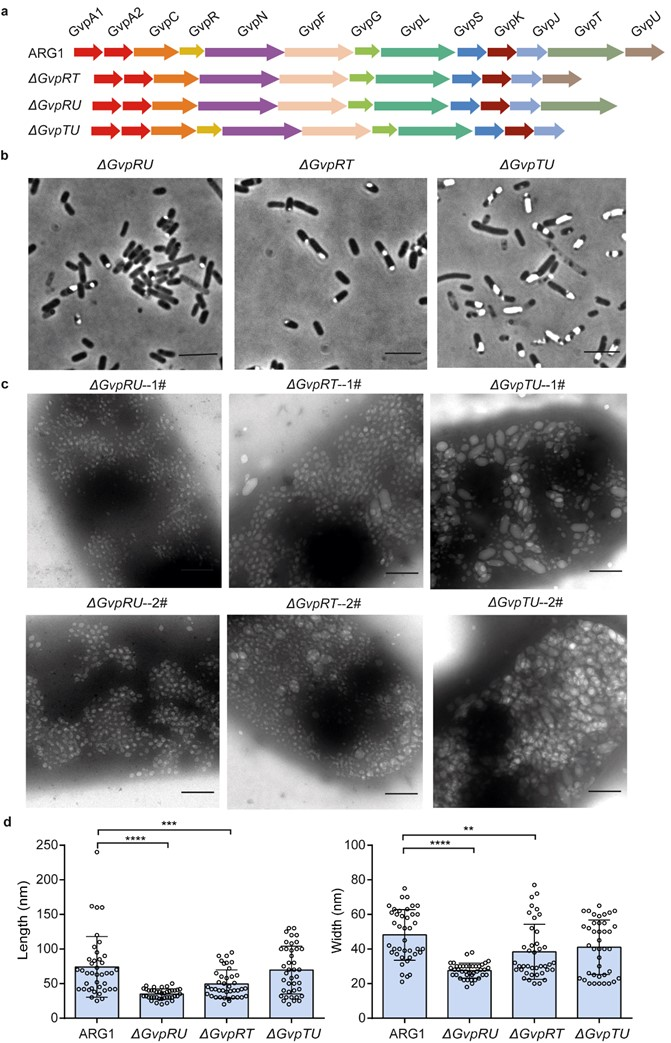
A research team led by Yan Fei with the Shenzhen Institute of Advanced Technology, Chinese Academy of Sciences has recently published an online research paper titled “Genetic Modulation of Biosynthetic Gas Vesicles for Ultrasound Imaging” in the the journal Small. This study systematically evaluated the function of biosynthetic gas vehicles, constructed the simplest genetic pathway for the synthesis of biosynthetic gas vehicles, achieved the genetic modification and modulation of their particle sizes, and obtained biosynthetic gas vehicles with a size of only 20 nm, which allowed them to cross various biological barriers in the body, and laid a foundation for expanding its biomedical applications. Yan Fei, a research fellow with Shenzhen Institute of Advanced Technology, Chinese Academy of Sciences, is the corresponding author of the article. Fu Meijun, a PhD graduate of the team, and Wang Yuanyuan, a research assistant, are the first authors of the article.

Screenshot of the article
Link: https: / / doi.org/10.1002/smll.202310008
Biosynthetic gas vehicles (BGV) can be used as a novel nanoscale ultrasonic contrast agent. According to some recent studies, biosynthetic gas vehicles are heterologously expressed in E. coli, which can visualize the engineered bacteria in the body through ultrasonic imaging, providing a new tool for studying the interaction between microorganisms and the host. However, the function of most recombinant proteins of BGV is unclear, and the genetic pathway is too long for genetic modification at the gene level. Therefore, the gene clusters of BGV need to be further optimized as an acoustic reporter gene.
In this study, the research team first constructed deletion mutants that removed a single BGV gene and determined the effect of a single BGV protein on the formation of BGV. The results of phase-contrast microscopy and TEM experiments showed that GvpC, GvpR, GvpN, GvpT and GvpU are not essential for the formation of BGV, and the particle size of BGV became smaller after removing GvpR, GvpN and GvpU alone, while the particle size became larger after removing GvpT. Then, the research team regulated the particle size and obtained ultra-small BGV with different particle sizes (from 50 nm to 20 nm). Later, the minimum genetic pathway required for the synthesis of BGV (only 4200 bp) was determined, demonstrating that E. coli could still synthesize BGV after GvpC, GvpR, GvpR, GvpN, and GvpT and GvpU were all removed. Finally, the research team evaluated the ultrasonic imaging performance of the deletion mutant ∆GvpCRTU in E. coli, and the results showed that the BGV synthesized by the deletion mutant ∆GvpCRTU can produce a strong ultrasonic imaging signal in the liver. In conclusion, this study provides new insights into the role of BGV proteins in the formation of BGV, and the generated ultra-small BGVs have a promising future for extensive biomedical applications.

Figure 1. Schematic diagram of the construction of different BGV mutants for ultrasound imaging

Figure 2. Phase-contrast microscope (upper row) and electron microscope map of E. coli expressing BGV protein mutants ∆GvpRU, ∆GvpRT, and ∆GvpTU
The research project was supported by the Key Research and Development Program of the Ministry of Science and Technology, the General Projects of the National Natural Science Foundation of China, Shenzhen Science and Technology Innovation Commission and Shenzhen Institute of Synthetic Biology, etc..